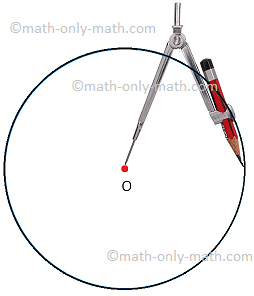Worksheet on Ordering Five Digit Numbers
Practice the questions given in the worksheet on ordering five digit numbers. The questions are based on finding the smallest and the largest number, arranging the 5-digit numbers in ascending and in descending order and comparing the 5-digit numbers using symbols.
1. Circle the smallest number:
(i) 19256, 15546, 17256
(ii) 85116, 78456, 79458
(iii) 78469, 79579, 71246
(iv) 45126, 79845, 94623
(v) 15468, 17896, 78946
2.
Underline the smallest number:
(i) 7894, 1254, 4589
(ii) 9521, 8654, 1002
(iii) 4001, 5001, 9001
(iv) 4456, 8856, 2246
(v) 3546, 1578, 9645
3. Arrange the following in ascending order:
(i) 12589, 14789, 12456, 19215
(ii) 65123, 45798, 78956, 94568
(iii) 43256, 53124, 83569, 45789
(iv) 25689, 14568, 20014, 24530
(v) 14578, 45789, 98456, 12546
4. Arrange the following in descending order:
(i) 12459, 45784, 56478, 12458
(ii) 45789, 56954, 98564, 70035
(iii) 78945, 65012, 35468, 24577
(iv) 47836, 22445, 23456, 44556
(v) 10245, 10013, 10236, 11235
5. Fill in the blanks using >, < or = sign.
(i) 6500 + 45 _____ 6546
(ii) 10000 _____ 99999
(iii) 60901 _____ 70019
(iv) 50000 _____ 59999
(v) 70000 + 50 + 9 _____ 9000 + 900 + 50 + 5
(vi) 89457 _____ one thousand less than 90457
(vii) Seven thousand more than 54201 _____ 98453
(viii) Ten thousand less than 65324 _____ 55324
(ix) 90000 + 9000 + 900 + 90 + 9 _____ 99999
(x) 88888 _____ 70099
Answers for the worksheet on ordering five digit numbers are given below to check the exact answers of the above questions on ordering numbers.
Answers:
1. (i) 15546
(ii) 78456
(iii) 71246
(iv) 45126
(v) 15468
2. (i) 1254
(ii) 1002
(iii) 4001
(iv) 2246
(v) 1578
3. (i) 12456, 12589, 14789, 19215
(ii) 45798, 65123, 78956, 94568
(iii) 43256, 45789, 53124, 83569
(iv) 14568, 20014, 24530, 25689
(v) 12546, 14578, 45789, 98456
4. (i) 56478, 45784, 12459, 12458
(ii) 98564, 70035, 56954, 45789
(iii) 78945, 65012, 35468, 24577
(iv) 47836, 44556, 23456, 22445
(v) 10245, 10236, 11235, 10013
5. (i) <
(ii) >
(iii) <
(iv) <
(v) <
(vi) =
(vii) <
(viii) =
(ix) =
(x) >
From Worksheet on Ordering Five Digit Numbers to HOME PAGE
Didn't find what you were looking for? Or want to know more information about Math Only Math. Use this Google Search to find what you need.
Recent Articles
-
Dividing 3-Digit by 1-Digit Number | Long Division |Worksheet Answer
Apr 24, 24 03:46 PM
Dividing 3-Digit by 1-Digit Numbers are discussed here step-by-step. How to divide 3-digit numbers by single-digit numbers? Let us follow the examples to learn to divide 3-digit number by one-digit nu… -
Symmetrical Shapes | One, Two, Three, Four & Many-line Symmetry
Apr 24, 24 03:45 PM
Symmetrical shapes are discussed here in this topic. Any object or shape which can be cut in two equal halves in such a way that both the parts are exactly the same is called symmetrical. The line whi… -
Mental Math on Geometrical Shapes | Geometry Worksheets| Answer
Apr 24, 24 03:35 PM
In mental math on geometrical shapes we will solve different type of problems on simple closed curves, polygons, basic geometrical concepts, perpendicular lines, parallel lines, circle, terms relates… -
Circle Math | Terms Related to the Circle | Symbol of Circle O | Math
Apr 24, 24 02:57 PM
In circle math the terms related to the circle are discussed here. A circle is such a closed curve whose every point is equidistant from a fixed point called its centre. The symbol of circle is O. We… -
Fundamental Geometrical Concepts | Point | Line | Properties of Lines
Apr 24, 24 12:38 PM
The fundamental geometrical concepts depend on three basic concepts — point, line and plane. The terms cannot be precisely defined. However, the meanings of these terms are explained through examples.




